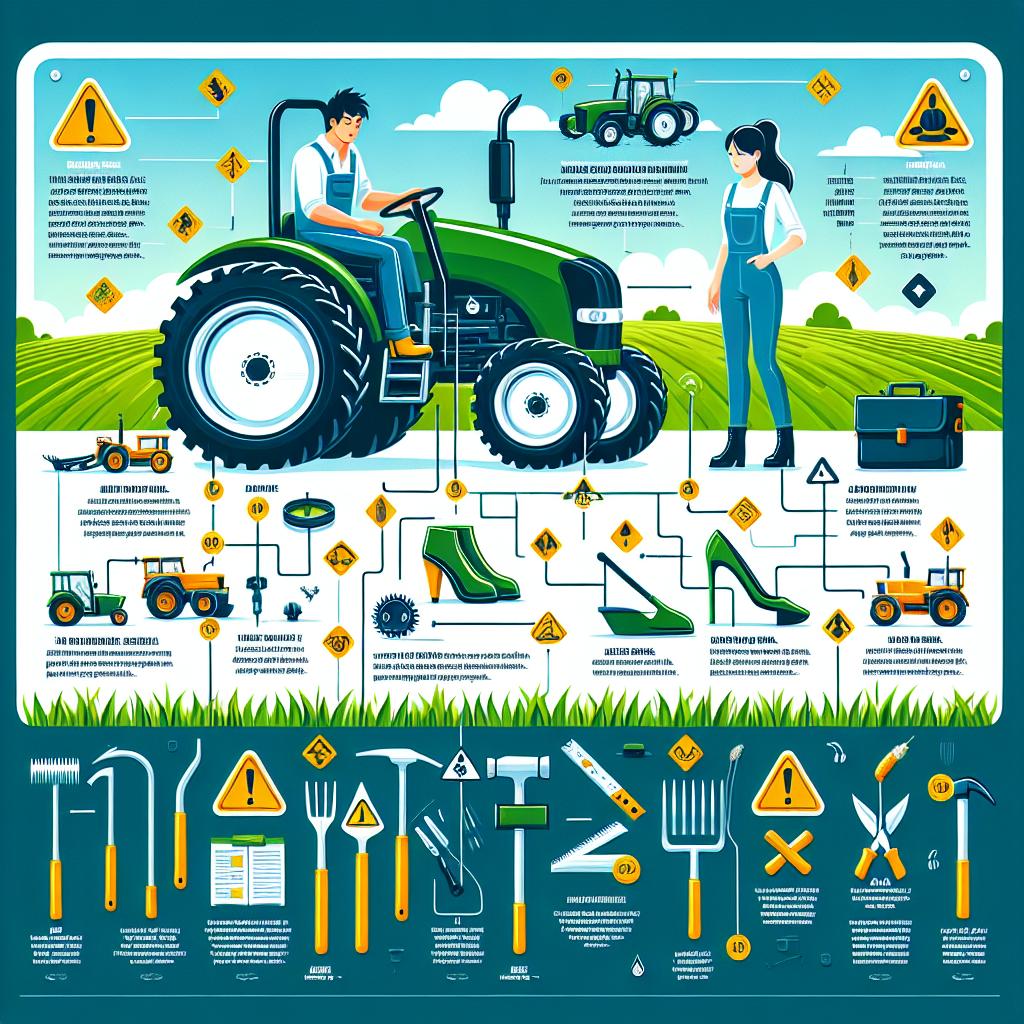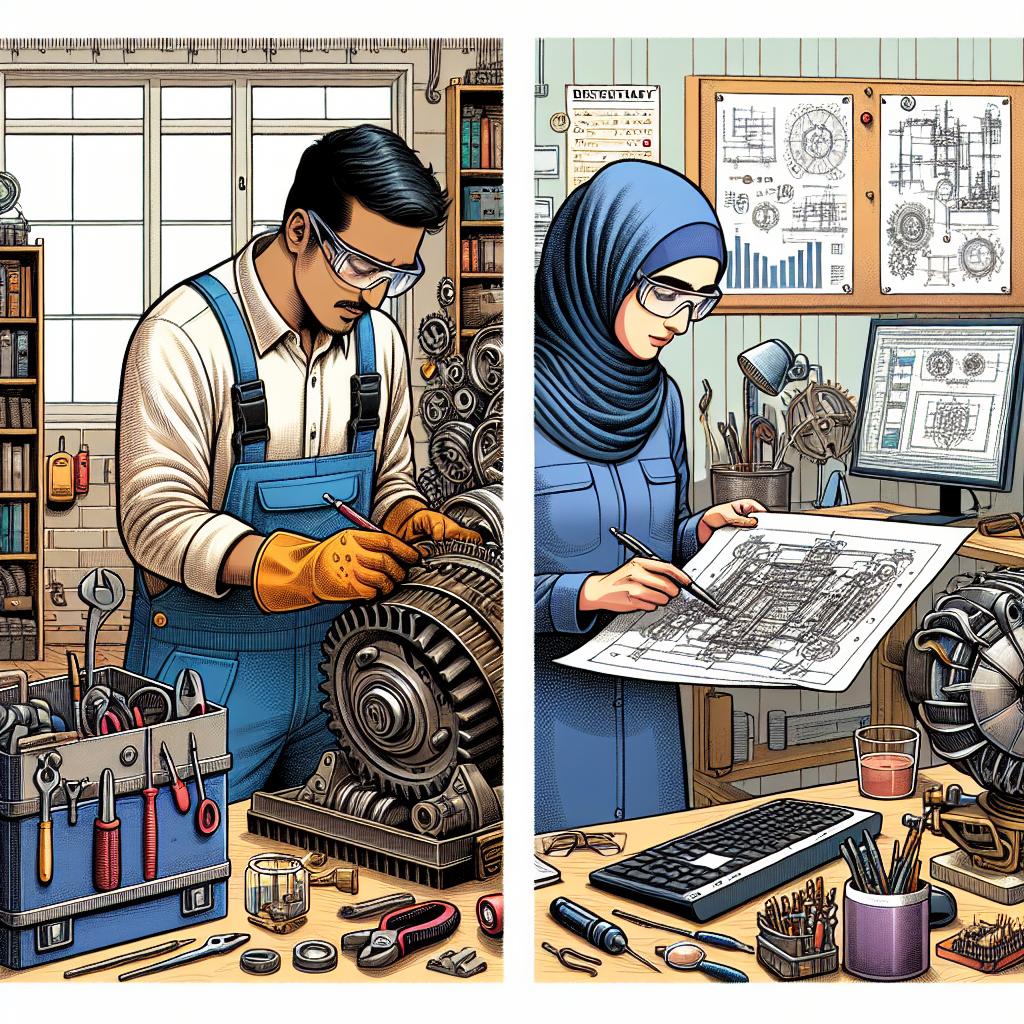This post may contain affiliate links which means I may receive a commission for purchases made through links. Learn more on my Private Policy page.
In the heart of the countryside, the hum of machinery and the clink of tools echo the rhythm of daily life on a farm. These instruments of agriculture, ranging from simple hand tools to complex machinery, empower farmers to cultivate the land and nurture crops. However, alongside their immense utility lies a crucial responsibility: safety. The allure of productivity can sometimes overshadow the potential hazards that accompany farm tools and equipment. Whether you’re a seasoned farmer or a newcomer to the field, understanding the essential safety tips when using these implements is paramount. This article will guide you through best practices, ensuring that your time spent in the fields is productive, efficient, and, most importantly, safe.
Understanding the Risks: Identifying Potential Hazards in Farm Tools and Machinery
In the world of agriculture, the importance of understanding the risks tied to farm tools and machinery cannot be overstated. Each piece of equipment, from tractors to hand tools, comes with its own set of potential hazards that can lead to accidents and injuries if not managed properly. Identifying these risks is the first step towards ensuring a safer working environment. Here are some common hazards to be aware of:
- Mechanical hazards: Sharp blades, moving parts, and pinch points can cause severe injuries.
- Electrical hazards: Faulty wiring or non-compliance with safety standards can lead to electric shocks or fires.
- Ergonomic hazards: Repetitive motions or improper lifting techniques can result in musculoskeletal disorders.
- Environmental hazards: Weather conditions and uneven terrain can increase the risk of accidents.
Recognizing these dangers is not enough; proactive measures must also be put in place. Regular inspection and maintenance of farm equipment play a critical role in mitigating risks. Keeping a close watch on wear and tear can prevent equipment failure. Consider establishing a safety protocol that includes:
- Routine checks on equipment functionality
- Proper training for all operators on safe machine handling
- Personal protective equipment (PPE) usage
- Clear signage around hazardous areas

Essential Maintenance Practices: Keeping Equipment Safe and Efficient
html
Proper maintenance of farm tools and machinery is crucial to ensure their longevity and performance. Regular checks and servicing can prevent minor issues from escalating into costly repairs or accidents. Daily inspections should include looking for signs of wear, checking fluid levels, and ensuring all safety guards are in place. Establish a routine schedule for more in-depth maintenance tasks, such as lubricating moving parts and replacing filters, to keep equipment running smoothly.
To streamline your maintenance efforts, consider implementing a maintenance log. This will help you track when each piece of equipment was last serviced and any repairs made. Use a simple table format to categorize tasks and frequencies effectively:
Equipment
Maintenance Task
Frequency
Tractor
Oil Change
Every 100 hours
Harvester
Blade Sharpening
After every harvest
Irrigation System
Filter Check
Monthly
By committing to these maintenance practices, you can maximize the efficiency and safety of your equipment. Make sure all operators are trained in proper usage and care to further enhance safety and operational efficiency on the farm.

Personal Protective Equipment: Safeguarding You While You Work
When working with farm tools and machinery, protecting yourself should be a top priority. Investing in personal protective equipment (PPE) is crucial for minimizing the risk of injury and ensuring a safe working environment. Always wear appropriate gear, which may include:
- Safety goggles: To shield your eyes from flying debris.
- Hearing protection: Earplugs or earmuffs to guard against harmful noise levels.
- Gloves: To protect your hands from cuts and abrasions.
- Steel-toed boots: To safeguard your feet from heavy equipment.
- Respirators or masks: For protection against dust and chemicals.
Furthermore, understanding the specific requirements for each piece of equipment is vital. Some tools may have designated safety gear recommendations to enhance your protection. It’s essential to regularly inspect your PPE for any signs of wear and tear, ensuring optimal performance during use. Below is a simple table showcasing popular farm tools along with their recommended PPE:
| Farm Tool | Recommended PPE |
|---|---|
| Lawn Mower | Ear protection, safety glasses, gloves |
| Chainsaw | Helmet, face shield, Kevlar chaps, gloves |
| Tractor | Seatbelt, hearing protection, steel-toed boots |

Training and Education: Ensuring Competence and Confidence in Tool Usage
To navigate the challenges of using farm tools and machinery safely, investing time in training and education is imperative. Proper training not only enhances operational efficiency but also fosters a culture of safety. Farmers and workers should participate in formal training sessions or workshops that cover key aspects of machinery operation and maintenance. These sessions should focus on:
- Understanding Tooly Specifications: Familiarize yourself with the manufacturer’s guidelines for each tool.
- Safe Handling Practices: Learn the correct methods for operating, transporting, and storing equipment.
- Emergency Procedures: Know what to do in case of an incident or machinery malfunction.
Additionally, continuous education through refresher courses and hands-on demonstrations ensures that workers remain competent and confident in using tools. Utilizing peer1 mentorship programs encourages experienced operators to share their knowledge with novices, fostering teamwork and safety awareness across the farming community. To support this initiative, consider creating a simple tracking system for training completion:
| Training Course | Completed By | Date |
|---|---|---|
| Basic Tool Safety | John Doe | 2023-09-15 |
| Advanced Machinery Operation | Jane Smith | 2023-09-22 |
Q&A
Q&A: Essential Safety Tips When Using Farm Tools and Machinery
Q1: Why is safety so important when using farm tools and machinery?
A1: Safety is crucial when using farm tools and machinery because it helps prevent accidents and injuries that can impact both the operator and others in the vicinity. Farms are busy places, and the powerful equipment used can pose significant hazards if not handled correctly. Prioritizing safety fosters a more secure working environment, allowing for productive and efficient operations.
Q2: What are the most basic safety tips for operating farm machinery?
A2: Always start with the fundamentals:
- Read the Manual: Every piece of machinery comes with a user manual detailing safe operation. Familiarize yourself with it.
- Wear Protective Gear: Personal Protective Equipment (PPE) such as gloves, goggles, and sturdy boots can greatly reduce the risk of injury.
- Conduct Pre-Operation Checks: Before using any machinery, inspect it for wear and tear, checking brakes, lights, and other important features.
- Stay Alert: Avoid distractions while operating machinery. Stay focused to respond quickly to any situation.
Q3: What specific precautions should be taken when using hand tools?
A3: Hand tools, while often seen as safer, require care to prevent injuries:
- Use the Right Tool for the Job: This minimizes the risk of injury and maximizes efficiency.
- Keep Tools Maintained: Regularly sharpen cutting tools and check for damage. Dull tools can slip and cause injuries.
- Work in a Clean Area: Ensure that workspaces are organized and free from clutter to reduce the risk of accidents.
- Store Tools Properly: After use, tools should be stored in their designated place to prevent accidents when they’re needed again.
Q4: How can we ensure the safety of others when operating machinery?
A4: Keeping others safe around machinery is just as important:
- Establish a Safety Zone: Ensure a clear perimeter around the machinery, advising others to stay clear while you operate.
- Use Hand Signals or Radios: Communicate effectively with colleagues to avoid any misunderstandings while working.
- Educate Others: Provide basic safety training for those who might be near the machinery, so they understand the dangers and how to protect themselves.
Q5: Are there any age-related considerations for operating farm tools and machinery?
A5: Yes, age plays a significant role in safety:
- Children and Teenagers: Ensure they are adequately trained and supervised if they are using tools or machinery. They should only operate equipment suitable for their skills and maturity level.
- Elderly Operators: Older individuals should be evaluated for physical capabilities and experience, ensuring they can handle machinery safely without undue risk.
Q6: What should you do in case of an accident?
A6: Having a plan in place can mitigate the fallout from an accident:
- Stop Working Immediately: If an accident occurs, cease operations to prevent further injury.
- Assess the Situation: Check if anyone is injured and if emergency services are needed.
- Report the Incident: Document what happened to learn from the experience and prevent future occurrences.
- Review Safety Protocols: After an accident, it’s vital to evaluate safety measures in place and adjust as needed.
Q7: How can I cultivate a culture of safety on the farm?
A7: Building a safety-centric culture involves:
- Lead by Example: Model safe behavior to encourage others to follow suit.
- Regular Training Sessions: Organize workshops and safety drills to reinforce safety habits.
- Open Communication: Encourage team members to voice safety concerns and share solutions.
- Reward Safe Practices: Recognize and reward safe behavior to foster an environment where safety is a shared responsibility.
By implementing these essential safety tips, everyone involved in farming can contribute to a safer work environment, ensuring the efficient and safe operation of tools and machinery.
Key Takeaways
the realm of farming is as rewarding as it is demanding, providing a unique connection to the land and its bounty. However, the tools and machinery that facilitate our agricultural endeavors also come with inherent risks that should not be overlooked. By incorporating the essential safety tips outlined in this article into your daily routines, you empower yourself and those around you to create a safer working environment. Remember, safety isn’t just a precaution; it’s a commitment to yourself, your family, and your livelihood. As you head back into the fields, may your productivity flourish alongside a culture of safety and mindfulness. The harvest is always sweeter when reaped with care. Stay safe, and happy farming!
This post may contain affiliate links which means I may receive a commission for purchases made through links. Learn more on my Private Policy page.

